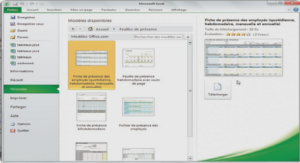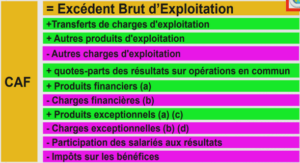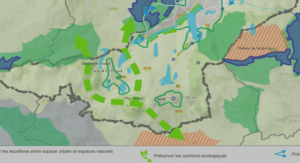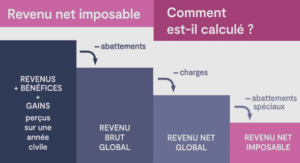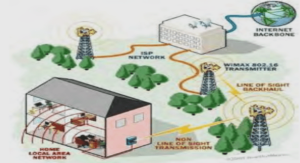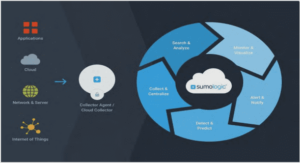Information and communication technology, its relation and impact on the environment
The passage from the industrial revolution to the information age brings great changes (Floridi, 2009). Changes ranging from passing a real market to a virtual market, hierarchically structured organizations to other organized into large collaborative networks, from access to physical resources to unlimited access to digital resources, from tangible immovable to an intangible information technology (Earl, 2000). Some of these changes, sometimes highly energy demanding, could represent potentially environment damage (Floridi, 2009). For example, inside information technology systems, data centers (DCs) demand about 1.1 to 1.5% of the world’s electricity consumption with an estimated annual increase of 15 to 20% (Ebrahimi et al., 2015). That, according to these estimates, by 2020 year, the ecological footprint of what encompasses information and communication technology (ICT) could overcome aviation industry (Floridi, 2009). This growth in the number of DC is due mainly to the increase in demand for data processing (Pärssinen et al., 2019). However, it seems that more attention is given to the technological advances to meet this demand than to the data processing itself.
Exponential data growth and its impact on the environment
Different studies (Clarke & O’Brien, 2012; Gantz & Reinsel, 2012; Hilbert & López, 2012; Lyman & Varian, 2003) have tried to determine how much [data] information (prints, videos, magnetic and optical storage systems, etc.) is managed by mankind in recent times. For example, one study (Lyman & Varian, 2003) showed that the amount of new information [data] stored worldwide increased approximately 30% per year between 1999 and 2002. Certainly, amounts change from one study to another since they use different measurement criteria and measure elements. However, one agreement among all studies is that: (1) the exponential growth of information [data] began with the internet revolution (shortly before the 2000 year), and (2) as the information natural processing grows, the worldwide processing technological capability grows exponentially, too. According to Clarke & O’Brien (2012), in 2010 the digital universe grew 1.2 zettabytes and its prediction for 2020 is that it will be 44 times as large as it was in 2009 (around 35zettabytes)
Regarding environmental effects due to the exponential data growth, we can mention two of the main impacts. The first impact is relating to information and communication technologies (ICT). Several studies have focused their attention on toxic substances and energy consumption caused by the ICT (Schmidt, Erek, Kolbe, & Zarnekow, 2009). The total worldwide network servers power consumption is equivalent to the total consumption of the Poland economy (Koomey, 2012). It is estimated that 1.3% of electricity global consumption in 2010 was just for power data centers (Fiorani, Aleksic, & Casoni, 2014). The energy used in these data centers is due to the sum of what they consume: 1) the IT equipment, 2) the cooling systems, and 3) electricity (Fiorani et al., 2014). The second impact is related to documents that flow daily through the organization, whether digital or printed. In both cases, these have environmental impact. For example, from one tree are produced around 80,500 sheets of paper. Early in the 21st century it was required around 786 million trees to ensure annual global paper supply (Lyman & Varian, 2003). Although within organizations has been chosen to digitize much of the documents, the use of paper at global level increases constantly surpassing 400 million t/yr. The global average is 0.055 t/yr. per person, but this distribution is not equitable. A person in North America consumes on average 0.215 t/yr. per person while a person in Africa, consumes on average 0.007 t/yr. per person (Kinsella et al., 2018).
Clarke & O’Brien (2012) have shown that document digitization does not solve either the ecological or the data excess problem. This happens because of a redundancy in both document formats, 52% of data in paper format are digitized, and that 49% of digital documents are printed. Therefore, the change of document format does not contribute at all to the solution for the environmental damage caused by an excess of data.
Impact of data quality within organizations
The previous section was referred to the impact of the document as a data transport medium within the information system. This section focuses on the content of these documents, the data and specifically in its quality. Since the amount of data starts to be a problem, a possible mitigation solution could be found in the exploration of its quality. However, a lot of information management are still not aware of the impact caused by low-quality data to their companies (Redman, 1998b). It has been estimated that low quality data has cost the United States economy 3.1 trillion of dollar per year (IBM Big Data and Analytics Hub, 2016). Also, other studies suggest that, on average, the financial impact due to low quality data to an organization, round 9.7 million dollars per year (Moore, 2017).
Redman (1998a, 1998b) suggests that some main impacts of low data quality inside organizations can be placed: at operational, tactical, or strategic level. At operational level, the low quality of data leads to unplanned events. Events that ultimately generate an increase in product cost. The low data quality can impact on: (1) the satisfaction’s client (2) in the cost of production or (3) in the employee’s satisfaction (Redman, 1998b). Some empirical studies estimate that the total cost of low-quality data for a company can be round between 8 and 12% of economic revenues (Redman, 1998a, 1998b). At the tactical level, the impact can be seen in the uncertainty degree generated for the missing accuracy in data collected for supporting the decision-making process. While the decision makers have the most relevant, complete, timely and accurate information, better decisions may take. Finally, the impacts at strategic level can be seeing in the difficulty to execute and end planned tasks due to the compromised ability to make decisions.
Data overload or information overload, an historical debate
Despite being two terms that cover different representations and meanings, the terms “data” and “information” are generally used interchangeably. On one side is the data that has been defined as a string of elementary symbols (Meadow & Yuan, 1997) that can be linked to a meaning related to communication and that can be manipulated, operated and processed (Yu, 2015). And on the other side it is the definition of information, a generally accepted definition is a coherent collection of data, messages, or signs organized in a certain way that has meaning or usefulness for a specific human system (Ruben, 1992). The meaning that give relevance to data transformed into information is determined by the context in which it happens. The meaning is defined in terms of what it does, rather than what it is (Logan, 2012). In a document office, the objectives and proceedings grant the meaning and usefulness level to requested data. Indistinct use of these two terms throughout history has generated confusion (Logan, 2012) in some cases and in others, frustration (Meadow & Yuan, 1997). One frustration reason is the inability to compare results between studies about information because they use different terms between them (Hayes, 1993).
Through the historical analysis of the information concept, we could find two great debates (among other less relevant), located at different historical times on the confusion caused by the interchangeable use of these two terms. The first debate was in the middle of the 20th century, concerning the quantification of information. On the one hand, Shannon (1948) presents his mathematical theory of communication. He held the idea that the information could be studied totally independent of its semantic aspect, that it could be measured using a probabilistic model, and that this model could be characterized as “entropy.” On the other hand, Wiener (1948), argued that information is just information, not matter or energy, that cannot be dissociated from its meaning, and that, if it had to be related to the thermodynamic concept of entropy, this last would represent the opposite of information. He, against Shannon, displayed the connection between the concept of organization and information. For him, the information is a measure of the organization degree in the system, and therefore entropy would be a measure of disorder degree in the system.
INTRODUCTION |

